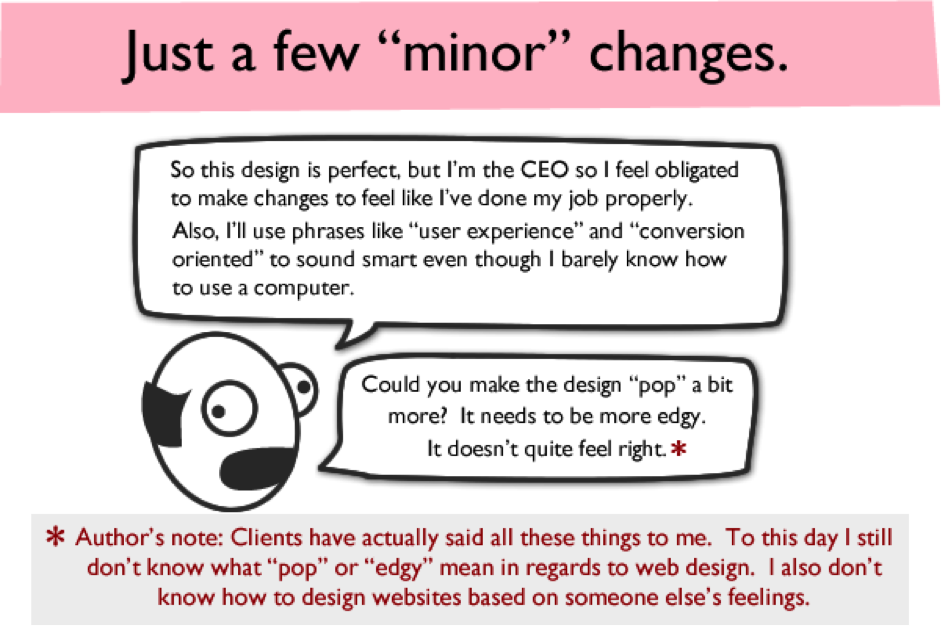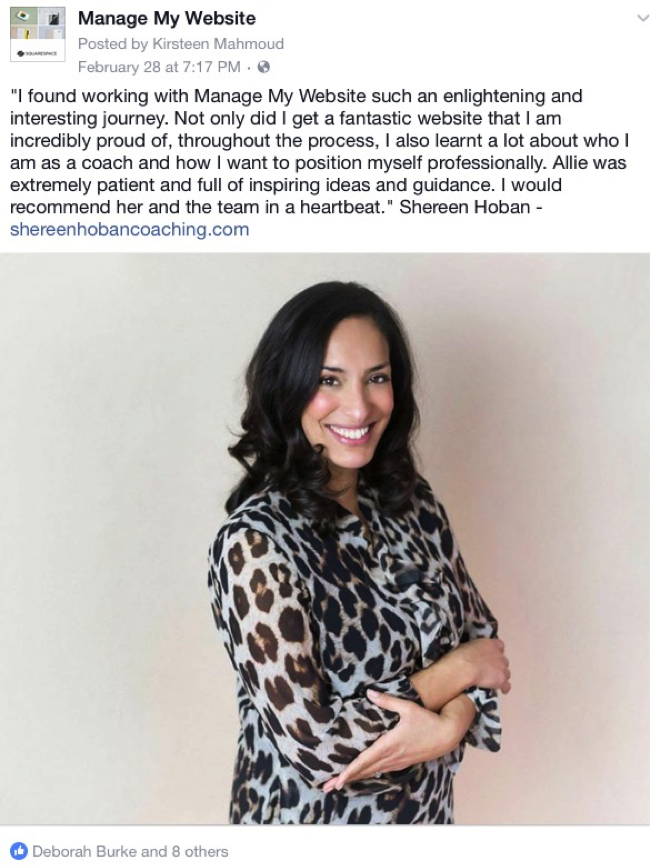Facebook For Business: Managing Your Page - Part Two
Are you finding Facebook for Business difficult to get to grips with? Take a look at our blog and if you need more help we're always here, so drop us a line.
This is Part Two in our series about managing and maintaining your business' Facebook page.
This time we’re going to talk about:
- Your Facebook objectives
- Engaging your audience
- Content strategy
- Planning and scheduling posts
- Replying to comments and messages
Your Facebook Objectives
When you create your page, think about your objectives and what you want to accomplish, as this will help you with your content strategy.
As an example, the aims of the Manage My Website Facebook page are to:
- Build our online presence and expand our reach
- Connect and engage with people who have a genuine interest in MMW
- Provide updates about MMW and the services we offer
- Demonstrate that we have authority in our field
- Drive traffic to our website
- Generate new leads which will convert to sales
We want people who are following our Facebook Page to connect and engage with us, and at some point (fingers crossed!) they'll choose to hire MMW for a Squarespace website project or for assistance with their online marketing.
If you’re a small/medium sized business your primary goals will probably be very similar to ours, so your main focus should be on engaging your audience and building your following, and then over time this should lead to an increase in sales.
Engaging Your Audience
Engaging your audience is one of the most important, and often the most challenging aspects of managing a page. Essentially it means that you want people who are following you to react positively to your content by taking at least one of the following actions:
- Like (or react to) an update
- Click on a link
- Share a post
- Leave a comment
The more actions people take on your content (likes, shares or comments), the greater exposure your business will receive.
Like/React - This is the simplest action a Facebook user can perform. Consider every ‘Like’ or positive reaction as a sign of approval.
Share - This is a far more valuable action as it helps to increase the number of people who could potentially see your content. If someone clicks on the ‘Share’ button, many of their Facebook connections will be able to see your post, expanding your reach.
Comment - This is the highest way of connecting with content. If a Facebook user leaves a comment it shows that the post inspired them to voice their opinion.
Encouraging people to engage with your content is really important because if your post gets plenty of engagement it will appear in more news feeds, and it could potentially show up for Facebook users who aren’t following your page (and have never heard of your business), helping you to build your online presence and expand your reach.
When you’re thinking about what type of content to share always remember that ultimately you want your followers to engage with your posts and build a connection with you, and eventually hire or buy from you.
Here’s an excellent example of this:
Fashion retailer Oasis occasionally post photos on their page with two items from their range and they ask their followers which they would like to win. They're encouraging people to like/react, comment and share the post. In the example below you can see that 165 people shared the post with their Facebook connections, 1100 people liked it and 1300 commented on it.
With these levels of engagement it means that potentially thousands more Facebook users saw the photo in their news feed (including people who are not following the Oasis page) and perhaps many of those people chose to buy a product. In this instance Oasis gave a freebie, but we’re sure that they felt that the cost was worth it for the high levels of engagement that they received.
Content Strategy
When looking at what to post each day, you might think that the best approach is to continuously share photos of your products or information about your services with links to your own website. But don't do this too often as your followers might get bored or irritated if there are too many ‘salesey’ posts - and then they might 'unlike' your page.
A successful strategy will include a combination of posts which promote your products/services and other types of updates which are likely to engage the audience. By sharing different types of content you’re more likely to grow your Facebook following, and then when you do post a photo or link which is intended to drive traffic to your website it will reach even more people.
To help inspire you here are some suggestions about the different types of content you could share on your Page:
- Photos or videos of your products/services
- Photos of the interior and exterior of your business premises
- Photos of your team in their work environment
- Photos of a new team member with a short introduction
- Information about new products or services with a link to your website
- Links to interesting and relevant articles or blogs
- Photos of customers using your products
- Details about any awards that your business has been nominated for recently
- Links to blogs that you’ve written which appear on your website
- Testimonials
- Staff interviews with a link to the blog section of your website
- Fun facts and trivia
- Details about special offers
- Inspirational quotes
- Answer a ‘Frequently Asked Question’
- Information about upcoming events, exhibitions, workshops etc.
- Funny cartoons, memes and GIFs
- Photos of your team working at an exhibition/function
- Photos of your team at a work event
While cartoons, memes, GIFs and photos of team nights out can be a great idea, particularly as they can show a personal side to your business, it's important that you don’t share content just to entertain people who have liked you page. These types of posts need to be interspersed with other ones, such as links to relevant blogs and articles, client testimonials etc.
If you’re sharing cartoons, memes or GIFs, ideally they should be relevant to your business or industry in some way. We occasionally share The Oatmeal’s (a.k.a. Matthew Inman) cartoons about web design as we think they’re funny and they drive engagement, - they’re also relevant to our industry.
Remember that your page should represent your business professionally, so make sure that you don't post anything that may offend your audience or reflect badly on your business.
Top Tip: When you’re planning your content it is a good idea to look at your page insights to see what types of posts are working well for you. At MMW we’ve noticed that our followers tend to engage well with posts which include testimonials and photos of our lovely clients, so we always ensure that we share this type of content whenever we get new feedback.
Planning and scheduling posts
One idea which could help ensure that you share a variety of engaging and relevant content is to create a ‘content schedule’ which you can follow each week. Here’s an example:
Monday: Share an update from your team
Tuesday: Share details about a specific product or service
Wednesday: Share a quote or interesting fact that is relevant to your industry
Thursday: Answer a FAQ or share a client testimonial
Friday: Share an update about a specific product or details about a service
If you're busy running your business during normal working hours, it might not be convenient for you to stop what you’re doing to post something on social media. However with Facebook Pages there is an option to create a post and schedule it to publish on your page in the future. This is particularly useful if you decide to follow a content schedule as shown above, because you can plan and schedule your posts in advance.
To schedule a post:
- Start creating your post at the top of your Page's Timeline
- Click next to Publish and select Schedule
- Below Publication, select the date and time when you want the post to publish
- Click Schedule
To reschedule, edit or delete a scheduled post:
- Click Publishing Tools at the top of your Page
- Click Scheduled Posts in the left column
- Click the post you want to edit
- Click Edit to edit the post, or click to choose to publish, reschedule or delete it
- To see a history of all edits to a scheduled post, click View Edit History.
Scheduled posts can also be created and edited by Admins and Editors who help manage your page.
Replying to comments and messages
Comments:
We read numerous blogs and articles about social media trends every week and social media experts have different opinions about replying to comments on Facebook, Twitter, Instagram etc. Some say that it is not necessary to respond to every single comment, especially those that don't ask for a response.
But we believe that responding to comments is an important part of interacting and engaging with your audience and we'd advise you to try to respond to everything - unless of course it's spam, inappropriate or offensive in which case you should just hide or delete it.
You can reply to comments on your page's posts publicly or in a private message. When you reply with a private message, anyone can see that your page has responded privately below the comment.
To reply to a comment publicly:
- Click Reply below the comment
- Add your reply and press the Enter key
To reply to a comment in a private message:
- Click Message below the comment
- Enter your message and click Send
Positive comments should always be responded to as this encourages more interaction, however if you do receive negative feedback, make sure you respond as quickly as you can to show you care and to prevent the issue from escalating into something more serious.
Look out for an upcoming blog about how to handle negative comments on social media coming soon!
Timing is important and most people who post a comment on your page expect a response within 24 hours, any longer may discourage them from future interaction.
Messages:
Your page must represent your business in a professional way. So if someone sends a direct message it's important to reply promptly and in the same way that you would if you received an email or phone call.
As we mentioned in our previous post ‘Facebook For Business - Managing Your Page - Part One’, Moderators, Admins and Editors can reply to private messages from the page. Always make sure that anyone replying to messages fully understands your business and the way you communicate with your customers.
If you Facebook confuses you and you need some help, you might be interested in our Skype training services. We can help you to set up and optimise your page, understand your insights, and learn more about posting engaging content and planning your posts.
Please get in touch – we’d love to hear from you!



